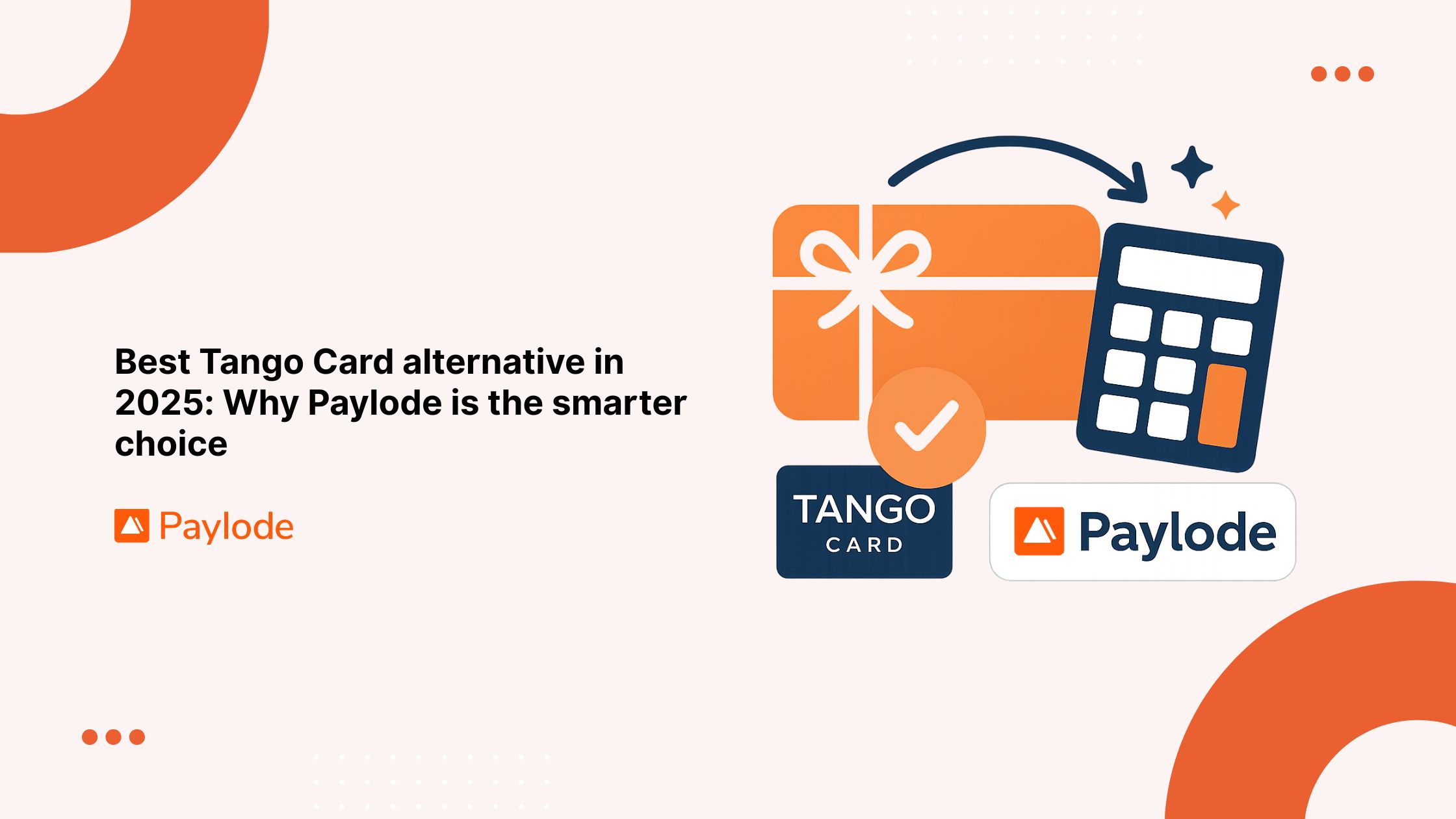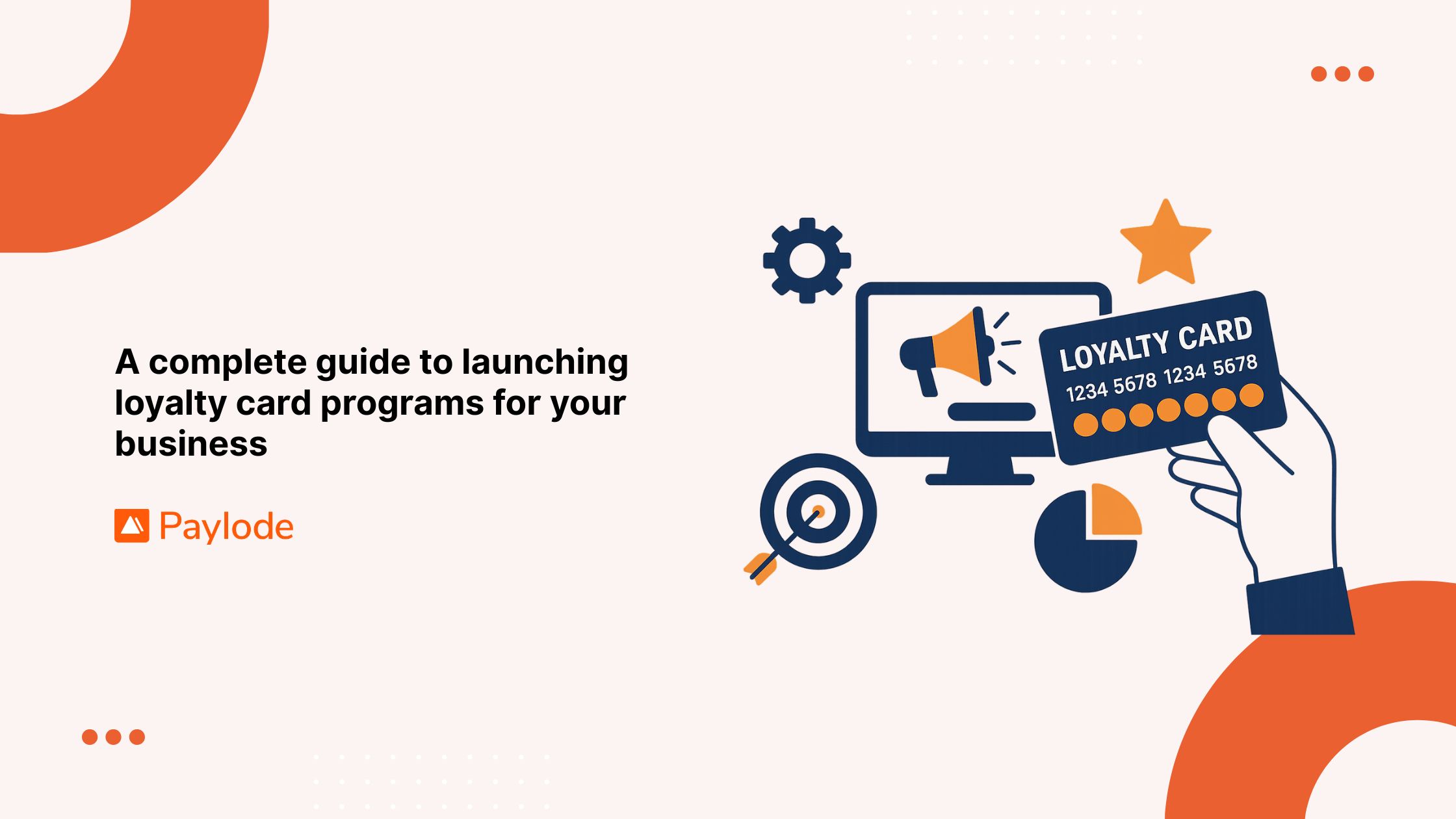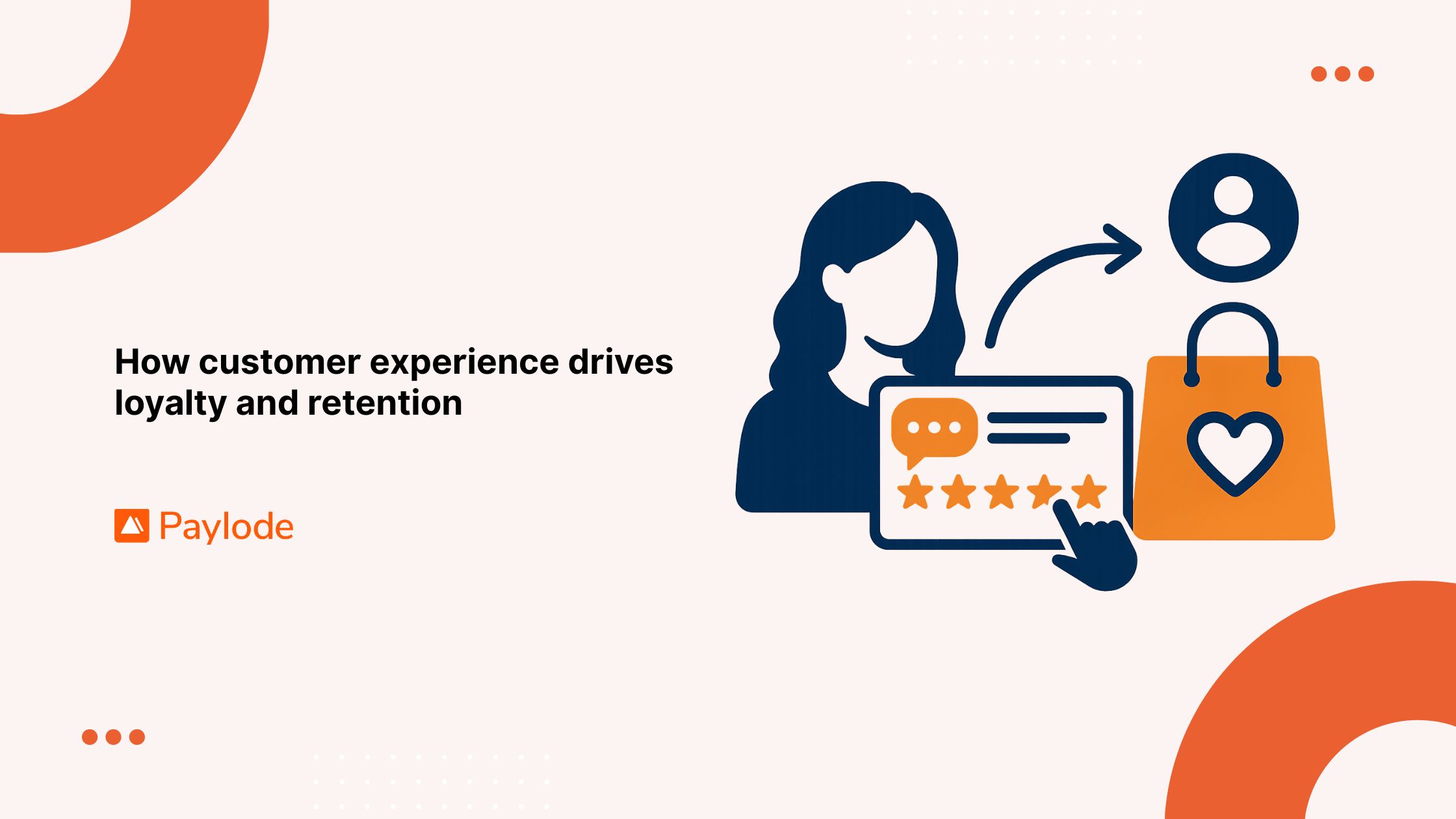Customer loyalty has become one of the most valuable assets for businesses in today’s competitive landscape. While companies often invest heavily in attracting new customers, research consistently shows that retaining existing customers is far more cost-effective. This is where loyalty platforms step in, helping brands build stronger connections, encourage repeat engagement, and ultimately boost retention.
A loyalty platform is more than just a points system—it’s a comprehensive technology solution that allows businesses to create meaningful perks, rewards, and experiences that keep customers coming back. Unlike traditional reward programs, loyalty platforms are designed to integrate seamlessly with customer journeys, whether that’s paying bills on time, choosing automatic payments, or renewing a subscription.
The impact of loyalty platforms spans across industries. For example:
- Telecom and ISPs use loyalty perks to reduce customer churn.
- Residential real estate leverages loyalty platforms to increase tenant satisfaction with resident perks.
- Financial services build stronger relationships by offering personalized rewards.
- Digital health providers use loyalty solutions to encourage healthier behaviors and renewals.
In this guide, we’ll explore everything you need to know about loyalty platforms: how they work, the features that matter most, and strategies to maximize retention. By the end, you’ll see why loyalty platforms aren’t just nice-to-have tools—they’re essential for sustainable business growth.
What are loyalty platforms?
A loyalty platform is a technology-driven solution that enables businesses to design, manage, and optimize customer loyalty programs. Unlike old-fashioned punch cards or basic discount schemes, loyalty platforms bring automation, personalization, and data intelligence into the customer engagement process.
At their core, loyalty platforms are built to reward customers for specific behaviors—whether that’s making a purchase, paying bills on time, referring friends, or switching to paperless billing. But they don’t stop there. They also deliver insights to help brands understand what keeps customers engaged and how to improve retention strategies.
Key elements of loyalty platforms
- Personalized perks – Tailored rewards based on customer preferences (e.g., resident perks for tenants or bonus perks for telecom subscribers).
- Automation – Reduces manual effort by automatically triggering rewards for actions such as setting up automatic payments.
- Omnichannel engagement – Works seamlessly across apps, email, SMS, and web portals.
- Data analytics – Provides actionable insights into customer behavior, lifetime value (LTV), and churn risks.
Loyalty platforms vs. traditional reward programs
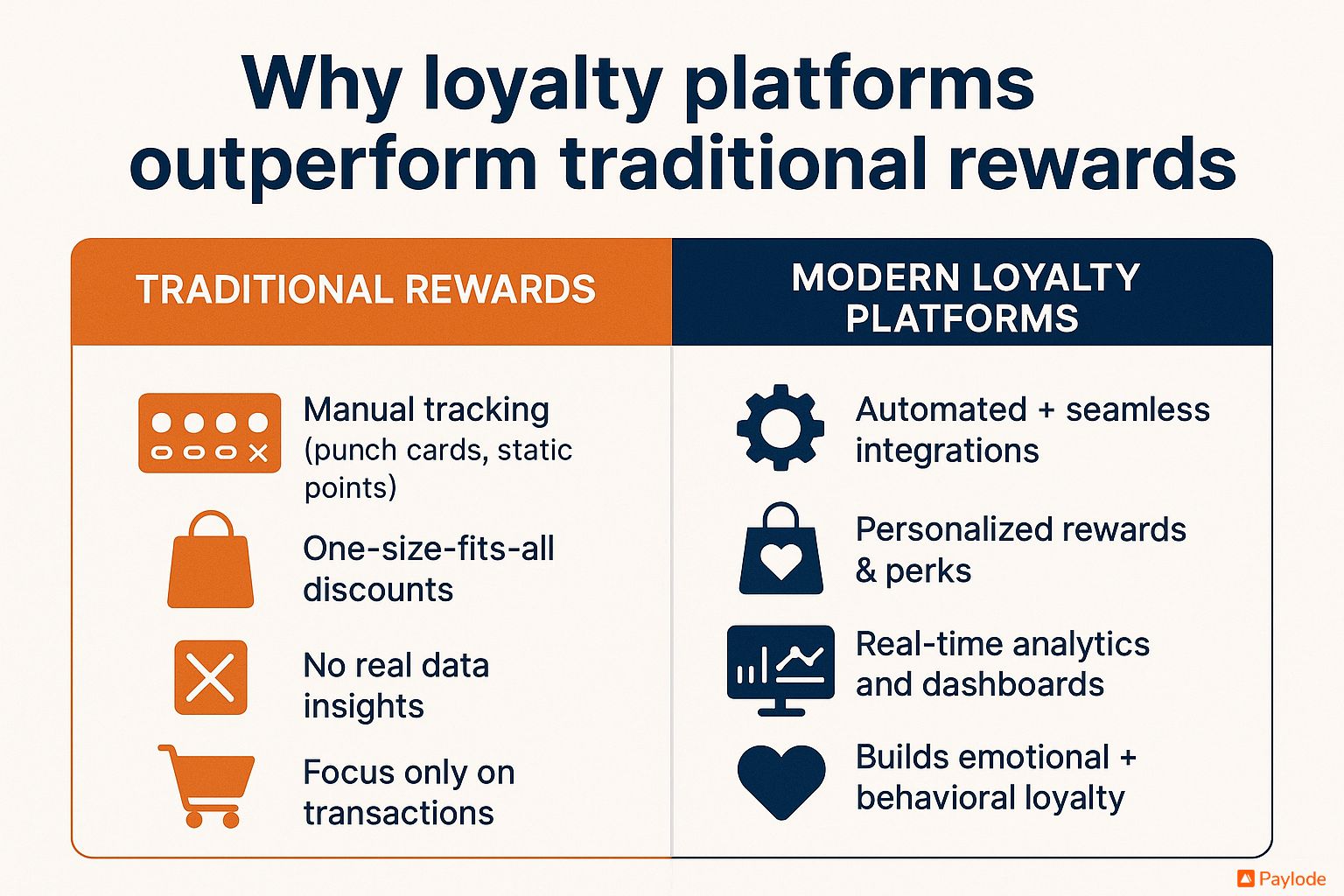
In short, loyalty platforms aren’t just about points or discounts. They serve as strategic tools for businesses to strengthen relationships, encourage repeat actions, and deliver meaningful customer experiences.
Why customer retention matters more than acquisition
In today’s saturated markets, businesses spend significant budgets on marketing and sales to acquire new customers. However, research shows that acquiring a new customer can cost 5–7 times more than retaining an existing one. More importantly, retained customers are not only cheaper to maintain but also more profitable—they spend more, stay longer, and are more likely to refer others.
This is why loyalty platforms have become essential. They reduce the reliance on constant acquisition by focusing on building long-term relationships. When customers feel valued, they’re less likely to switch to a competitor and more likely to explore additional products or services.
Real-world examples
- Telecom & ISP: Customer churn is one of the biggest challenges in telecom. Loyalty platforms reduce churn by offering perks like exclusive upgrades, bonus data, or rewards for staying on autopay.
- Financial services: Banks and fintech companies leverage loyalty platforms to cross-sell services. For example, rewarding customers for opening a savings account after signing up for a credit card creates stronger ties and higher lifetime value (LTV).
Retention ROI across industries
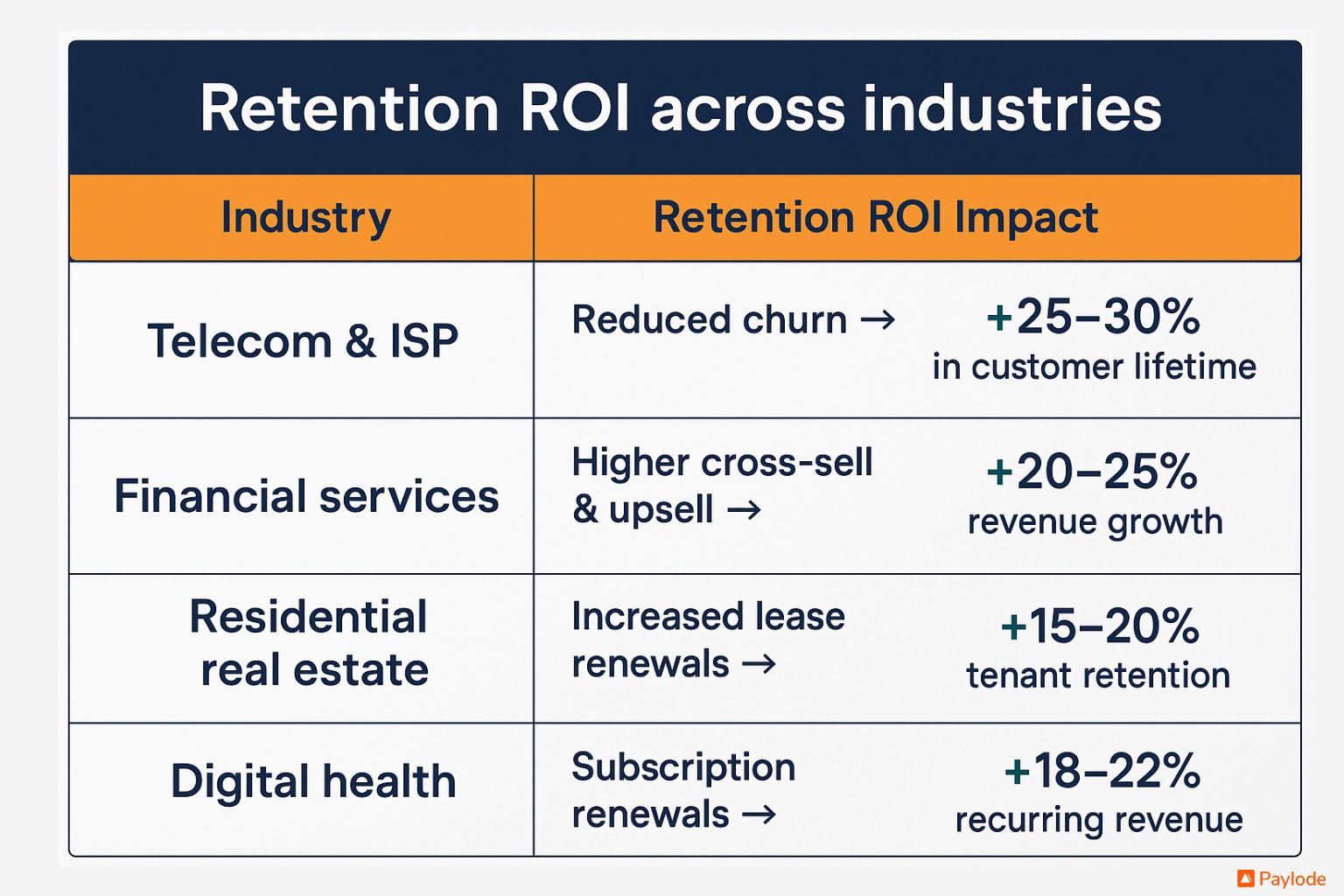
Retention isn’t just about keeping customers happy—it’s about unlocking sustainable growth. By investing in a loyalty platform, businesses shift their focus from expensive acquisition cycles to nurturing long-term, high-value customer relationships.
Core features of modern loyalty platforms
Modern loyalty platforms go far beyond simple point-collection systems. They are built with advanced features that help businesses streamline engagement, drive retention, and deliver real value to their customers. Here are the core features that make today’s loyalty platforms powerful:
Automation and seamless integrations
One of the biggest strengths of loyalty platforms is automation. Instead of manually tracking rewards, businesses can automatically trigger perks when customers complete actions like signing up for automatic payments or switching to paperless billing.
Seamless integration with existing systems—such as CRMs, billing platforms, and apps—ensures that rewards are linked directly to customer behavior without additional friction. This not only saves operational time but also ensures a smooth, consistent customer experience.
Personalized rewards and perks
Modern customers expect personalization. A one-size-fits-all discount is no longer enough. Loyalty platforms allow businesses to tailor perks based on customer profiles, behaviors, and preferences.
For example, a telecom provider might reward heavy data users with bonus streaming perks, while a real estate property manager can offer residents discounts on local services to increase tenant satisfaction. Personalized perks build emotional connections that extend beyond simple transactions.
Real-time data & analytics
A loyalty platform is as much about insights as it is about rewards. Real-time analytics help businesses track key metrics like customer lifetime value (LTV), redemption rates, churn risk, and engagement trends.
For decision-makers, this data is invaluable. It highlights which perks drive the most retention, which customer segments are most engaged, and where improvements can be made. By continuously optimizing based on data, businesses maximize ROI from their loyalty strategies.
Multi-channel engagement (mobile apps, email, SMS)
Customers engage with brands across multiple touchpoints, and loyalty platforms ensure rewards are accessible wherever they are. Whether through mobile apps, web portals, email campaigns, or SMS notifications, businesses can meet customers on their preferred channels.
For instance, an ISP can send an SMS notification about bonus perks for staying enrolled in autopay, while a digital health provider may deliver app-based loyalty points for regular check-ins. This multi-channel approach keeps engagement consistent and top-of-mind.
Example: Residential real estate loyalty perks
Property managers face the challenge of keeping tenants happy and renewing leases. A loyalty platform can improve resident satisfaction by offering perks such as local business discounts, move-in bonuses, or referral rewards. This not only enhances the living experience but also reduces costly tenant turnover.
How loyalty platforms boost customer retention
Customer retention isn’t just about keeping people from leaving—it’s about giving them consistent reasons to stay engaged. Loyalty platforms help businesses achieve this by creating structured, rewarding experiences that build long-term value for both the customer and the brand.
Create habitual engagement
Loyalty platforms encourage customers to form habits that align with business goals. For instance, when a telecom or ISP rewards users for enrolling in autopay, customers are more likely to stick with that service long-term. Similarly, a residential real estate provider offering resident perks ensures tenants regularly engage with the platform, building stickiness into the relationship.
By making these engagements rewarding, customers naturally repeat them, turning ordinary transactions into positive routines.
Build emotional connection with the brand
Today’s customers want more than discounts—they want to feel valued. Loyalty platforms strengthen emotional bonds by offering perks that resonate with customer needs. Personalized offers (such as discounts on local services for tenants or fitness perks in digital health platforms) go beyond financial incentives, creating a sense of appreciation and connection.
An emotional connection is powerful because it transforms customers into advocates, increasing both retention and referrals.
Encourage repeat usage and payments
Retention thrives when customers continue to use and pay for services consistently. Loyalty platforms reinforce this by rewarding repeat behaviors like monthly bill payments, subscription renewals, or product upgrades.
For example, digital health loyalty software can encourage recurring subscriptions by offering points or discounts for completing health check-ins, booking follow-up appointments, or renewing plans. These small nudges keep customers active and reduce churn over time.
Real business impact: Raising LTV
Ultimately, the goal of any loyalty strategy is to increase customer lifetime value (LTV). By combining habit-forming perks, emotional connections, and repeat transactions, loyalty platforms extend customer relationships and maximize profitability.
Example: Raise customer LTV – Businesses across industries use loyalty platforms to turn everyday interactions into long-term value, boosting both retention and revenue.
Industry use cases of loyalty platforms
While the concept of customer loyalty applies universally, each industry has unique challenges and opportunities when it comes to retention. Loyalty platforms adapt to these needs by delivering perks, rewards, and experiences that address sector-specific pain points. Here’s how different industries leverage loyalty platforms to boost retention and revenue.
a) Telecom & ISP
Telecom providers and ISPs face some of the highest churn rates across industries. Customers often switch providers due to cost, promotions, or service frustrations. Loyalty platforms offer a way to reduce churn by rewarding stability and engagement.
- Perks for autopay enrollment: Customers who set up recurring payments receive bonus data or discounts.
- Exclusive upgrades: Long-term subscribers are rewarded with device upgrades or premium service access.
- Referral rewards: Encourage word-of-mouth by rewarding customers for bringing in new subscribers.
Learn more about telecom loyalty solutions.
b) Residential real estate
Property managers know how costly tenant turnover can be. Loyalty platforms help increase tenant satisfaction and lease renewals by transforming the rental experience into something more rewarding.
- Resident perks: Discounts on local gyms, dining, or home services.
- Referral programs: Rewards for tenants who bring in new residents.
- Lease renewal incentives: Perks for signing longer contracts.
Example: A property owner integrates a loyalty platform offering local business discounts, making residents feel more connected to their community.
Explore resident perks use case.
c) Financial services
Banks and fintech companies use loyalty platforms to strengthen relationships and drive cross-selling. By rewarding customers for engaging with multiple products, they increase overall lifetime value (LTV).
- Credit card rewards: Points for purchases that can be redeemed for lifestyle perks.
- Cross-product incentives: Customers earn perks for opening savings accounts, mortgages, or investment accounts.
- Engagement-driven perks: Rewards for going paperless or paying bills on time.
See how financial services loyalty software drives growth.
d) Digital health
In digital health, retention depends on patient engagement and recurring subscriptions. Loyalty platforms help providers encourage healthier habits and maintain ongoing relationships.
- Check-in rewards: Patients earn perks for completing regular health check-ins.
- Subscription renewals: Incentives for staying on long-term plans.
- Wellness challenges: Perks for reaching health milestones (e.g., fitness goals, preventive screenings).
For example, a digital health app might reward patients who complete monthly assessments with discounts on supplements or partner wellness services.
Learn about digital health loyalty software.
Why industry relevance matters
Loyalty platforms aren’t one-size-fits-all. By tailoring rewards to each industry’s customer behaviors, businesses can create meaningful experiences that drive real retention outcomes. Whether it’s reducing churn in telecom, keeping tenants happy in real estate, cross-selling in finance, or promoting healthy habits in digital health, loyalty platforms deliver industry-specific value that directly impacts retention and growth.
Steps to choose the right loyalty platform
Choosing the right loyalty platform is a strategic decision. The wrong fit can mean wasted investment, while the right one can transform customer relationships and deliver significant ROI. To ensure success, businesses should evaluate platforms based on their goals, technical needs, and long-term growth plans.
Define your goals
Start by identifying what you want the loyalty platform to achieve. Some businesses may focus on reducing churn, others on increasing customer lifetime value (LTV), and others on upselling or cross-selling. Clear goals help you align the platform’s features with your retention strategy.
For example:
- Telecom/ISP: Reducing churn through autopay perks.
- Financial services: Increasing LTV by cross-selling multiple products.
- Residential real estate: Improving tenant retention with resident perks.
Evaluate integrations
A loyalty platform should fit seamlessly into your existing ecosystem. Look for platforms that can integrate with:
- Payment systems for automatic billing perks.
- Customer relationship management (CRM) software for personalized engagement.
- Mobile apps and portals for delivering rewards in real time.
The more seamless the integrations, the easier it will be to reward customer behaviors without adding friction.
Check scalability for enterprise-level use
Retention strategies grow with your business, and your loyalty platform should scale too. Whether you’re a small real estate firm managing a few hundred residents or a national telecom provider handling millions of subscribers, the platform must handle increasing volumes of data, users, and transactions without slowing down.
Must-have analytics dashboard
Data is at the heart of effective retention. A strong loyalty platform should offer a robust analytics dashboard that provides insights into:
- Engagement levels
- Redemption rates
- Customer lifetime value (LTV)
- Churn risk indicators
Real-time reporting ensures that you can track what’s working and optimize your program quickly.
Checklist: what to look for in a loyalty platform
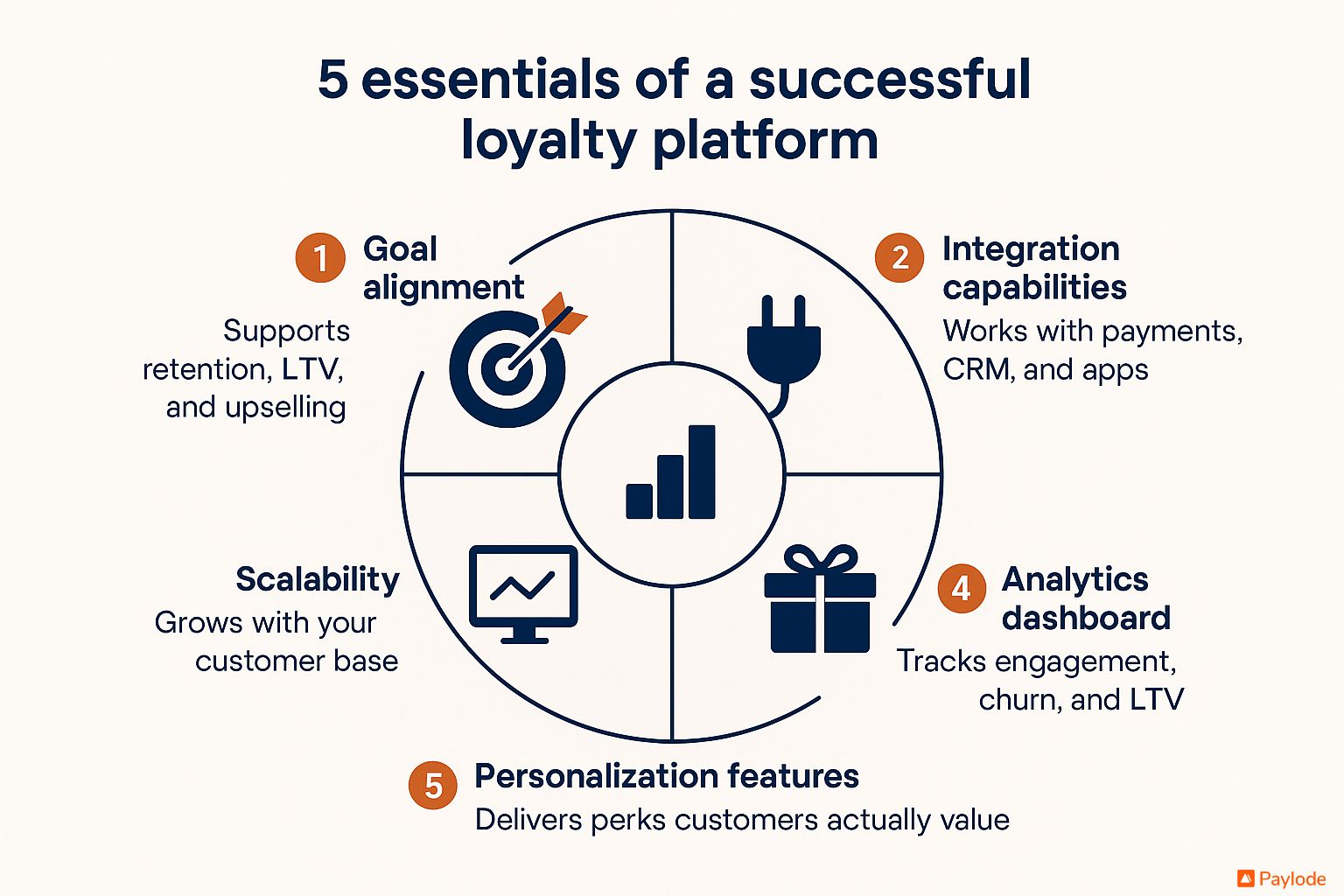
By carefully evaluating these factors, businesses can choose a loyalty platform that not only meets today’s needs but also drives long-term customer retention and growth.
Common mistakes businesses make with loyalty platforms
While loyalty platforms can significantly improve customer retention, many businesses struggle to get the most out of them. The problem often lies in execution. Here are some common mistakes that limit effectiveness—and how to avoid them.
Overcomplicating the program
Some businesses design loyalty programs that are too complex for customers to understand. Complicated rules, confusing point systems, or hidden restrictions can frustrate users and discourage participation. Simplicity is key: the easier the program is to join and benefit from, the more likely customers will engage consistently.
Lack of personalization
A generic, one-size-fits-all approach reduces the impact of a loyalty platform. Today’s customers expect tailored experiences that reflect their needs and behaviors. Without personalization, rewards feel irrelevant and fail to build emotional connections. For example, offering the same perk to every customer may not resonate as much as offering different rewards based on usage or lifestyle.
Not linking perks to real customer needs
Another common mistake is offering perks that don’t align with what customers actually value. If perks don’t solve real problems or add meaningful value, customers won’t engage. For example, ISPs that encourage customers to switch to paperless billing can offer loyalty perks like discounts or bonus points. This not only promotes eco-friendly practices but also reduces administrative costs and increases adoption.
Explore the switch to paperless use case.
By keeping programs simple, personalizing rewards, and aligning perks with customer needs, businesses can unlock the full potential of loyalty platforms and avoid costly missteps.
Future trends in loyalty platforms
As customer expectations evolve, loyalty platforms are also transforming. Businesses can no longer rely on static rewards programs; they need forward-looking solutions that adapt to changing behaviors, technologies, and market conditions. Here are the trends shaping the future of loyalty platforms:
AI-driven personalization
Artificial intelligence (AI) is becoming central to loyalty strategies. Platforms now use AI to analyze customer data and deliver hyper-personalized offers in real time. Instead of generic discounts, customers may receive rewards tailored to their purchase history, location, or lifestyle preferences. This level of precision makes loyalty programs more relevant and engaging.
Hyper-localized perks
Customers increasingly value perks that fit into their daily lives. Future loyalty platforms will focus on local experiences, such as discounts at neighborhood gyms, cafés, or service providers. For residential real estate, this could mean connecting tenants with nearby perks that make them feel more rooted in their community.
Integration with mobile wallets and fintech
As digital payments become the norm, loyalty platforms are evolving to integrate seamlessly with mobile wallets and fintech solutions. This allows customers to redeem perks directly at checkout or earn rewards automatically when they make purchases—eliminating friction and making loyalty effortless.
Predictive analytics to prevent churn
Retention isn’t just about rewarding behaviors—it’s about anticipating risks. Predictive analytics will enable platforms to identify customers at risk of leaving and automatically trigger perks or campaigns to keep them engaged.
Example: rewarding automatic payments
One way businesses are already preparing for the future is by incentivizing autopay enrollment. Customers who set up recurring payments can be rewarded instantly, improving retention while streamlining billing operations.
Explore the automatic payments use case.
The future of loyalty platforms lies in personalization, convenience, and proactivity. Companies that adopt these trends will be better positioned to keep customers engaged and loyal in the long run.
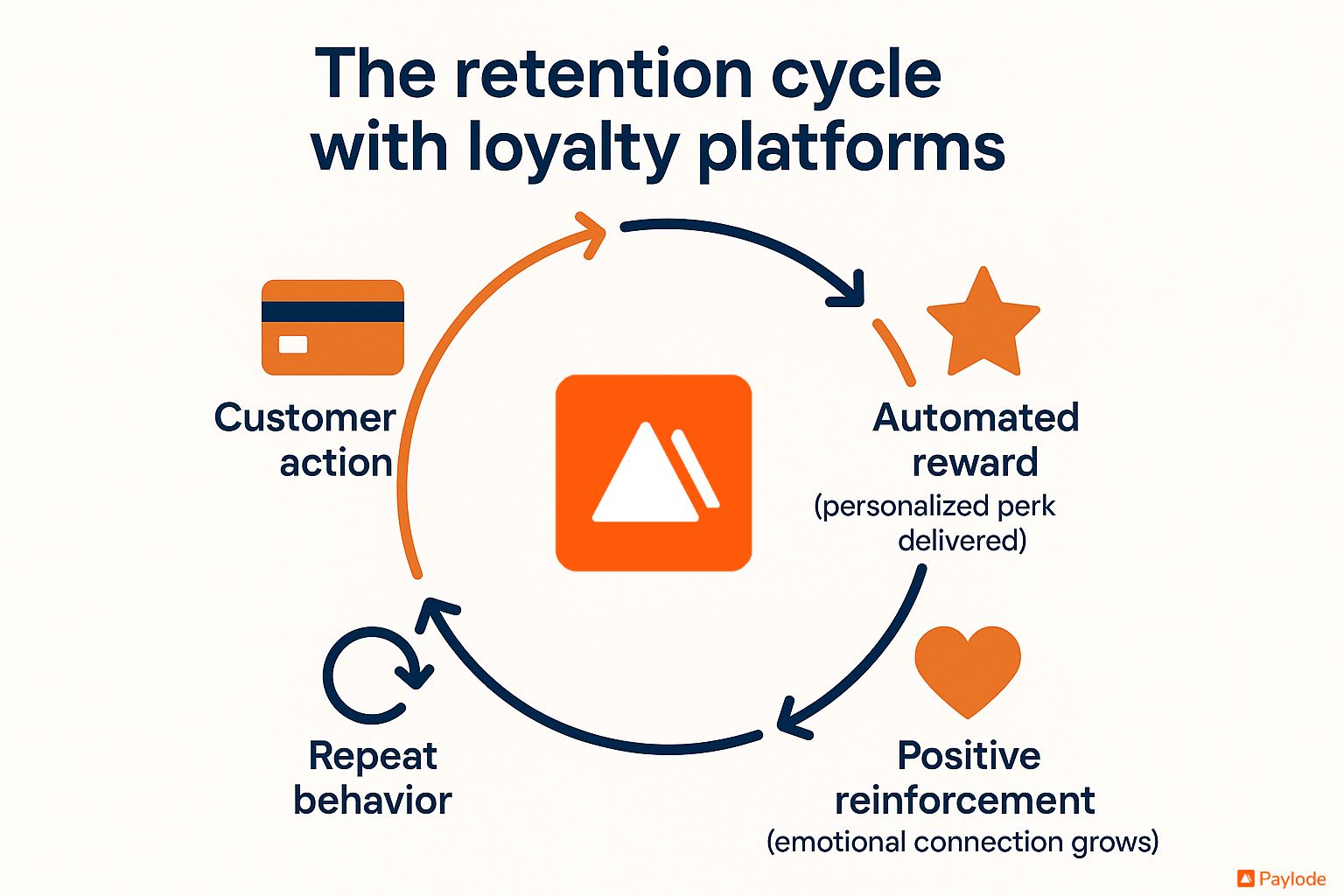
Conclusion
Customer retention is no longer optional—it’s essential for sustainable growth. While many companies still prioritize acquiring new customers, the real value lies in nurturing the relationships you already have. This is where loyalty platforms shine.
Unlike traditional reward programs, loyalty platforms combine personalization, automation, and analytics to create meaningful customer experiences. They encourage repeat behaviors, build emotional connections, and unlock long-term value. From reducing churn in telecom and ISPs to increasing lease renewals in residential real estate, driving cross-sells in financial services, and supporting subscription renewals in digital health, loyalty platforms prove their worth across industries.
The businesses that succeed in the future will be those that use loyalty not just as a marketing tactic but as a strategic growth driver. With the right platform, you can transform ordinary customer interactions into lasting relationships that increase lifetime value and revenue.
At Paylode, we specialize in helping businesses unlock this potential. Our loyalty solutions are built to integrate seamlessly into your operations, personalize customer engagement, and deliver measurable ROI.
Ready to see how loyalty platforms can transform your retention strategy?
Book a demo with Paylode today and start boosting customer loyalty, satisfaction, and lifetime value.
FAQs
1. What is the difference between a loyalty platform and a rewards program?
A rewards program typically focuses on points or discounts for purchases, while a loyalty platform is a full technology solution that personalizes perks, automates rewards, and delivers analytics. Loyalty platforms go beyond transactions by building stronger customer relationships and improving retention.
2. Which industries benefit most from loyalty platforms?
Loyalty platforms work across many industries, but they are especially effective in sectors with high churn or recurring payments. Examples include telecom and ISPs (reducing churn), residential real estate (boosting tenant retention), financial services (cross-selling products), and digital health (driving subscription renewals).
3. How do loyalty platforms improve customer lifetime value (LTV)?
By encouraging repeat engagement, loyalty platforms increase the frequency and duration of customer relationships. For instance, rewarding customers for recurring payments or renewals extends their lifetime with the brand, raising overall customer LTV while reducing churn.
4. Are loyalty platforms only for large enterprises?
Not at all. While enterprise businesses often leverage loyalty platforms at scale, small and mid-sized companies also benefit. Modern solutions are flexible and scalable, making them valuable for industries like property management, local ISPs, or niche fintech providers.
5. How can I measure the ROI of a loyalty platform?
ROI can be measured through metrics like reduced churn, higher renewal rates, increased LTV, and customer engagement levels. Platforms with built-in analytics dashboards make it easier to track these KPIs and demonstrate measurable business impact.
6. Do loyalty platforms really help with digital adoption?
Yes. Many businesses use loyalty platforms to encourage digital behaviors, such as switching to paperless billing or enrolling in autopay. These actions not only improve customer convenience but also reduce operational costs.

